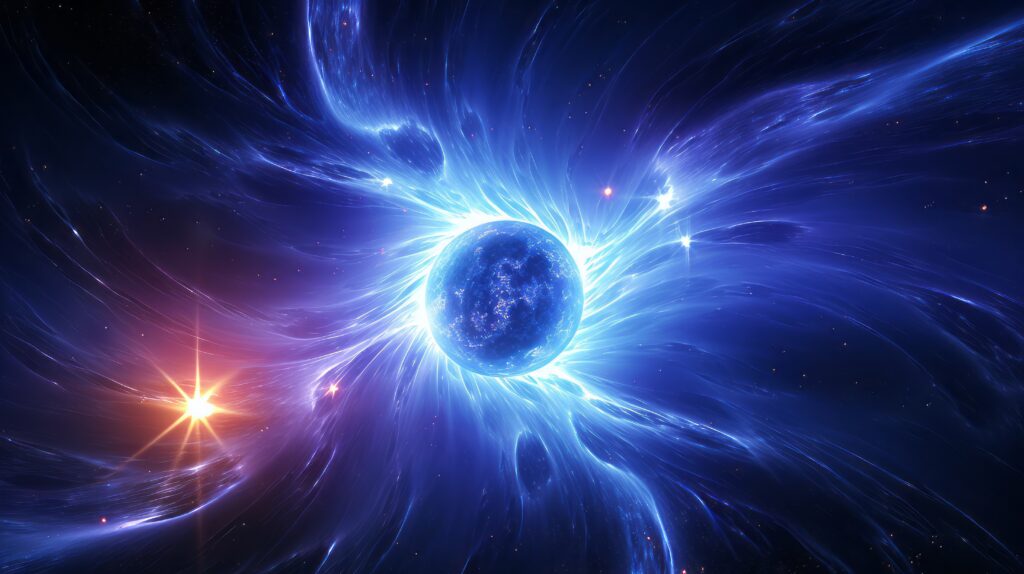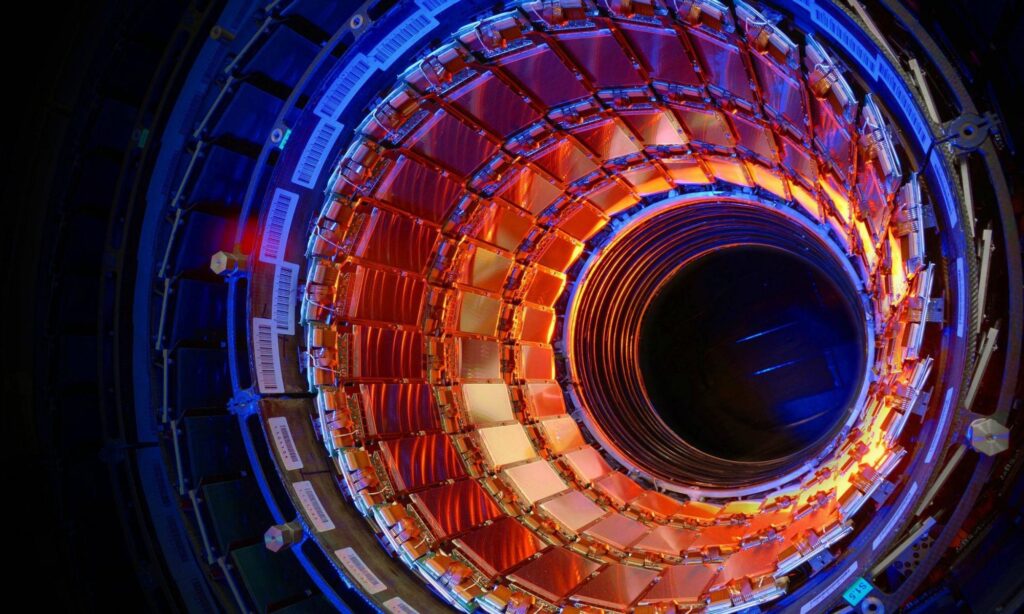
Colorful star in the vastness of space
What Is Inflationary Cosmology?
There are many theories about what happened before the universe was formed. One such theory suggests that the universe was at one point the size of a baseball.
Exponential Expansion at the speed of light
Inflationary cosmology is a theory in physics that proposes a period of extremely rapid expansion of the universe during the first fraction of a second after the Big Bang. This idea was introduced in the early 1980s by physicist Alan Guth to solve several significant problems in the standard Big Bang model, such as the horizon problem, the flatness problem, and the absence of magnetic monopoles. According to inflation, the universe expanded exponentially for a brief moment, smoothing out any irregularities and leading to the large-scale uniformity we observe today. This rapid expansion also stretched quantum fluctuations, which later became the seeds for galaxy formation.
What are the issues with this theory?
One of the most significant implications of inflation is that it predicts a nearly flat, homogeneous, and isotropic universe, which aligns with the observations of the cosmic microwave background (CMB) radiation. The theory also explains the distribution of large-scale structures, like galaxies and galaxy clusters, across the cosmos. While inflation remains a well-supported model, there are still open questions, such as the specific mechanism that triggered and ended inflation, and how it fits into the broader framework of quantum gravity. Nonetheless, inflationary cosmology remains a cornerstone of modern cosmology, helping to explain the early dynamics of our universe.
- What is the greatest empire in science fiction?
 What is the greatest empire in science fiction? A multi-planet spanning civilisation with the ability to travel the cosmos with ease.
What is the greatest empire in science fiction? A multi-planet spanning civilisation with the ability to travel the cosmos with ease. - What is the Cosmic Dark Ages?
 Around 370,000 years after the Big Bang the universe experienced total darkness for nearly a billion years.
Around 370,000 years after the Big Bang the universe experienced total darkness for nearly a billion years. - Why Ian M. Bank’s Culture Are One Of The Greatest Civilisations In Sci-Fi
 One of the most fascinating, intricate, and utopian societies in science fiction is Ian M.
One of the most fascinating, intricate, and utopian societies in science fiction is Ian M. - Japan Set To Construct An Automated Tunnel For Its Struggling Delivery Network
 Japan is like that kid, when you were growing up, who would always outshine you.
Japan is like that kid, when you were growing up, who would always outshine you. - Interstellar Tunnel Could Be Part Of A Galaxy Spanning Network
 Did astronomers discover a tunnel that connects to part of a galaxy spanning network? Well,
Did astronomers discover a tunnel that connects to part of a galaxy spanning network? Well, - CERN Upgrades To New $17 Billion Supercollider
 The new chief of CERN is particle physicist Mark Thomson has got some big challenges
The new chief of CERN is particle physicist Mark Thomson has got some big challenges
